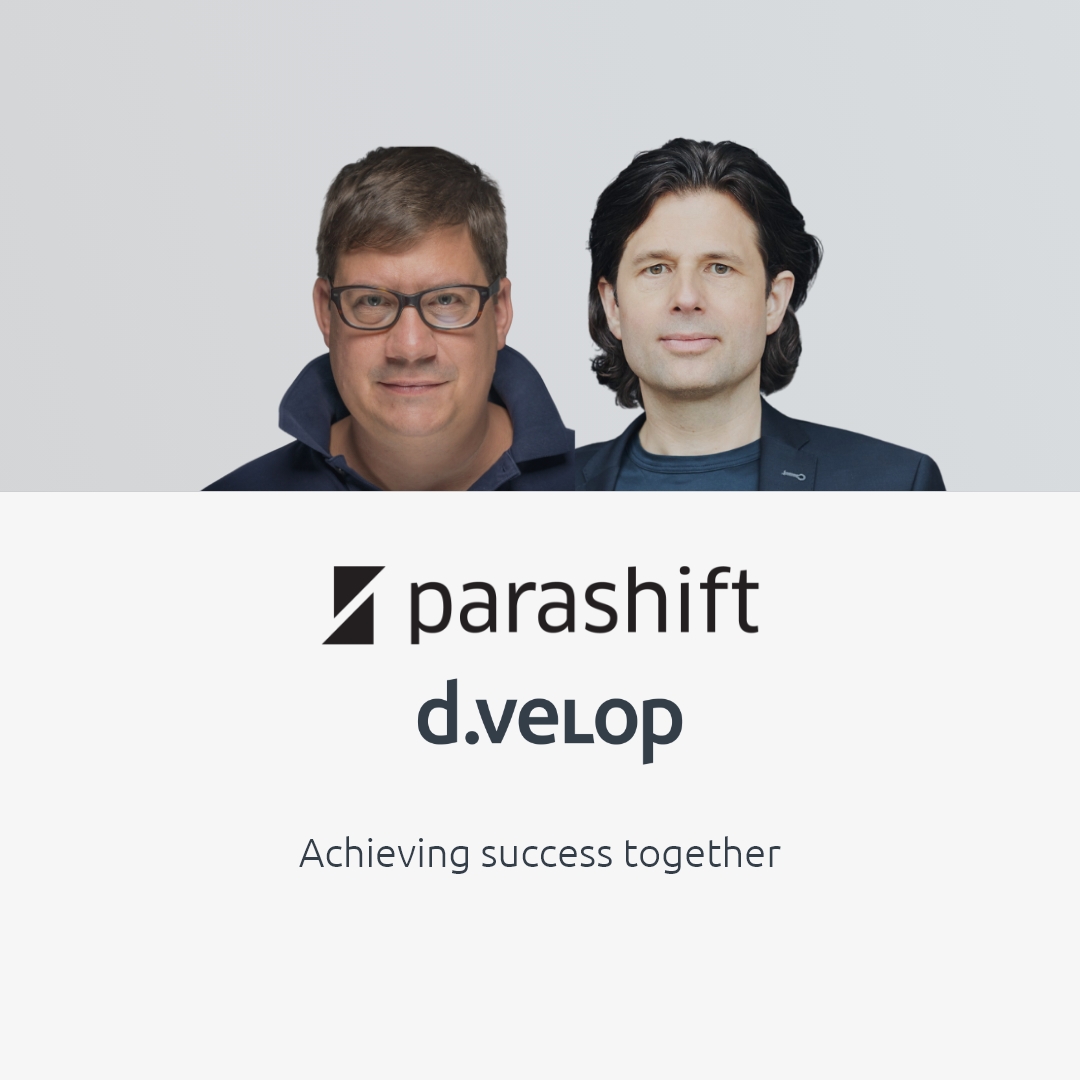THE D.VELOP PLATFORM AI STRATEGY
AI technologies are revolutionising the way
we interact with software
Aside from the ChatGPT craze, numerous generative AI models have been released in recent months. Natural language-based models are making AI available to absolutely everyone at a disruptive pace. This represents a turning point for software: A new age of content services has begun. The possibilities for innovation are fascinating. Shape the future with us!
Content services are getting smarter
d.velop is currently working intensively on how long-established AI technologies, such as text-to-speech, can be profitably combined with new Large Language Models and existing content services functions. Our declared goal is to enable d.velop users to interact with documents in even more intuitive ways, automate processes, and create freedom. On this basis, we’ve already developed the first applications and prototypes for the d.velop platform, which you can test right now. Go explore – see what you find!
- 5 days took it for ChatGPT to hit 1 million users (Statista).
- 32 billion in annual revenue will be generated by AI applications by 2025 (Statista).
- 48 % of larger German companies are already using AI (Bitkom study).
ARTIFICIAL INTELLIGENCE IN PRACTICE
AI services on the d.velop platform
Let artificial intelligence work for you with d.velop software. Use smart content services to automate your document-based and business processes. Free up staff resources – liberate your employees from manual, slow, and expensive work and create the space needed to foster greater productivity.
Integration with leading AI technologies
We are continually expanding the d.velop platform with strategic AI partnerships to seamlessly integrate leading AI applications. This gives you a choice over which technologies you’d like to use in the future. Our first integrations with LLM providers OpenAI and Parashift, are already available for testing.
D.velop Pilot
Quickly and easily find important information thanks to AI
Reading documents yourself is so 2020. Your DMS is getting even smarter thanks to the latest AI technology:
- Smart importing: Document types and properties can be automatically identified and clearly displayed in the index. Results from the AI are highlighted and can be output in seconds.
- Smart context: Contextual information is automatically generated for each document – for example, sender information or short summaries.
- Smart chat: The chat function allows you to ask questions about the document or enter information. Summaries of texts, responses relating to queries about contractual deadlines, and other information are made available in real time.
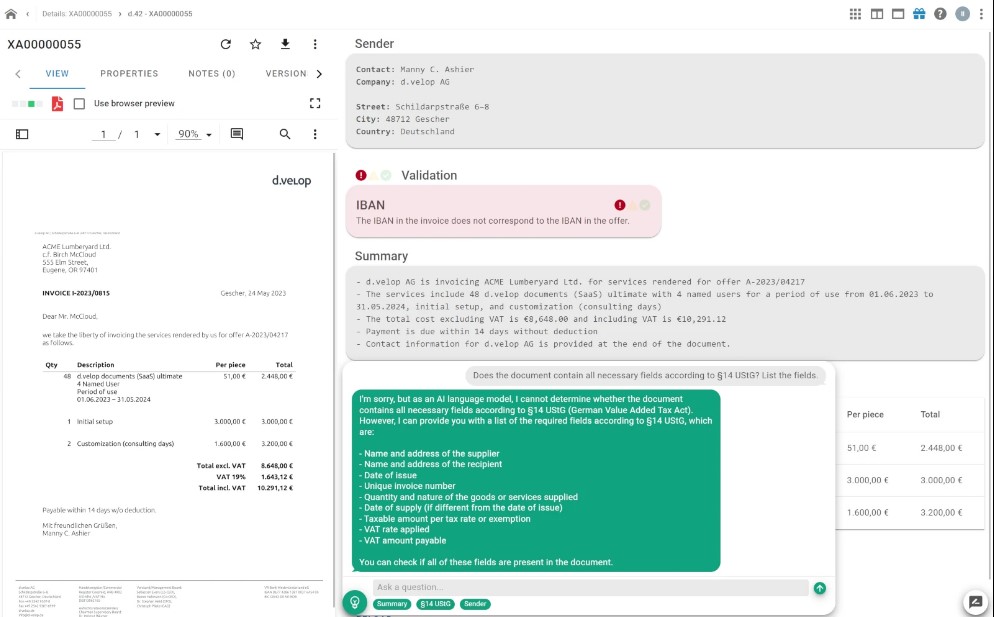
d.velop documents
AI-assisted document processing
In many companies and organisations, capturing and digitising documents is often still a manual process that takes a lot of time and isn’t fun. AI technologies provide the answer.
Splitting documents
- AI-based document splitting: Large quantities of scanned documents are cleanly separated in seconds.
- Text and image analysis with machine learning: Multi-page documents are clearly identified.
- No more manual work: Barcodes are superfluous.
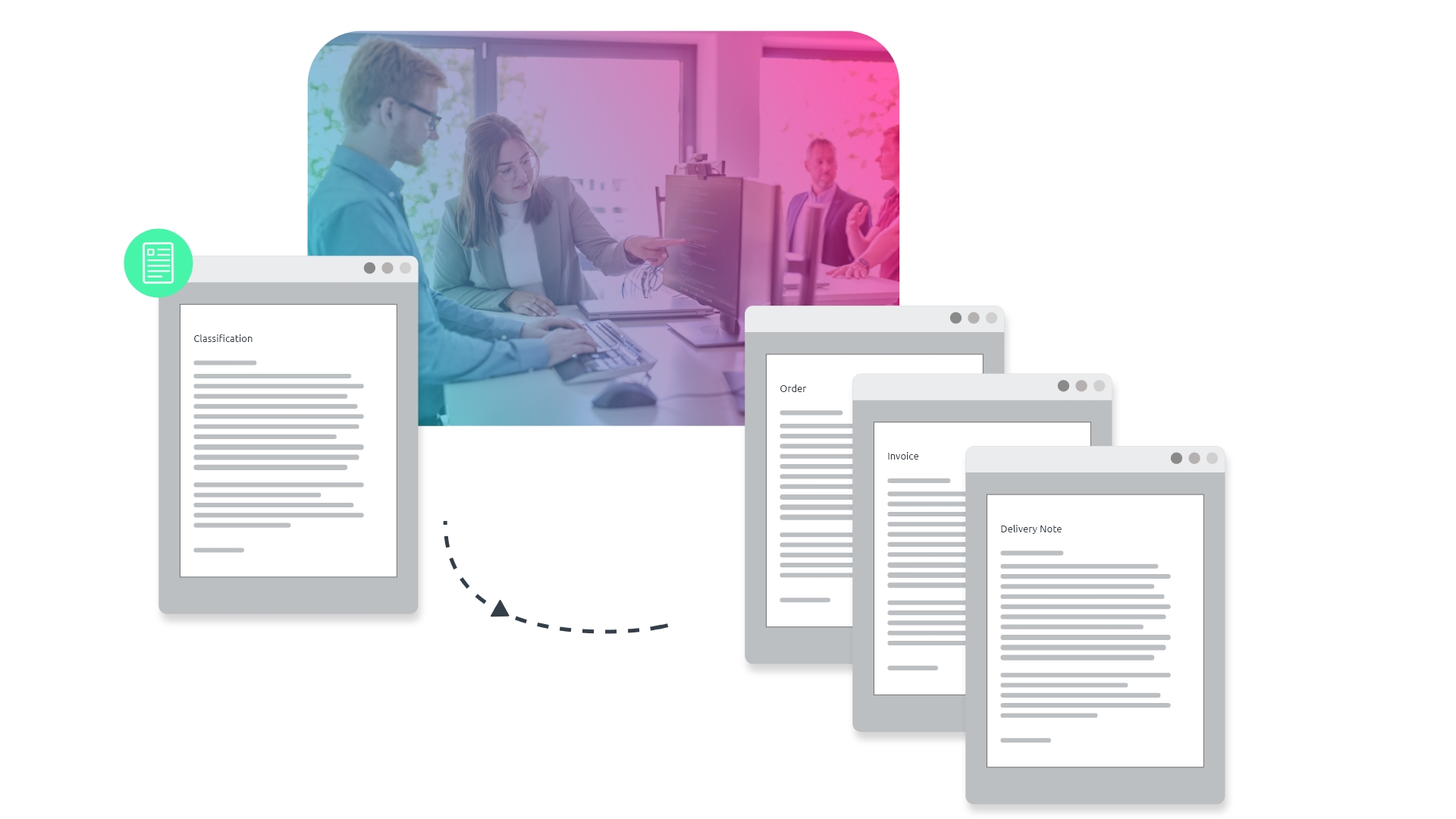
Recognise and classify documents
- Reliably recognise document types such as invoices, reminders, and delivery notes with AI.
- Workflows based on document type: Automatic classification in digital repositories or automated post distribution.
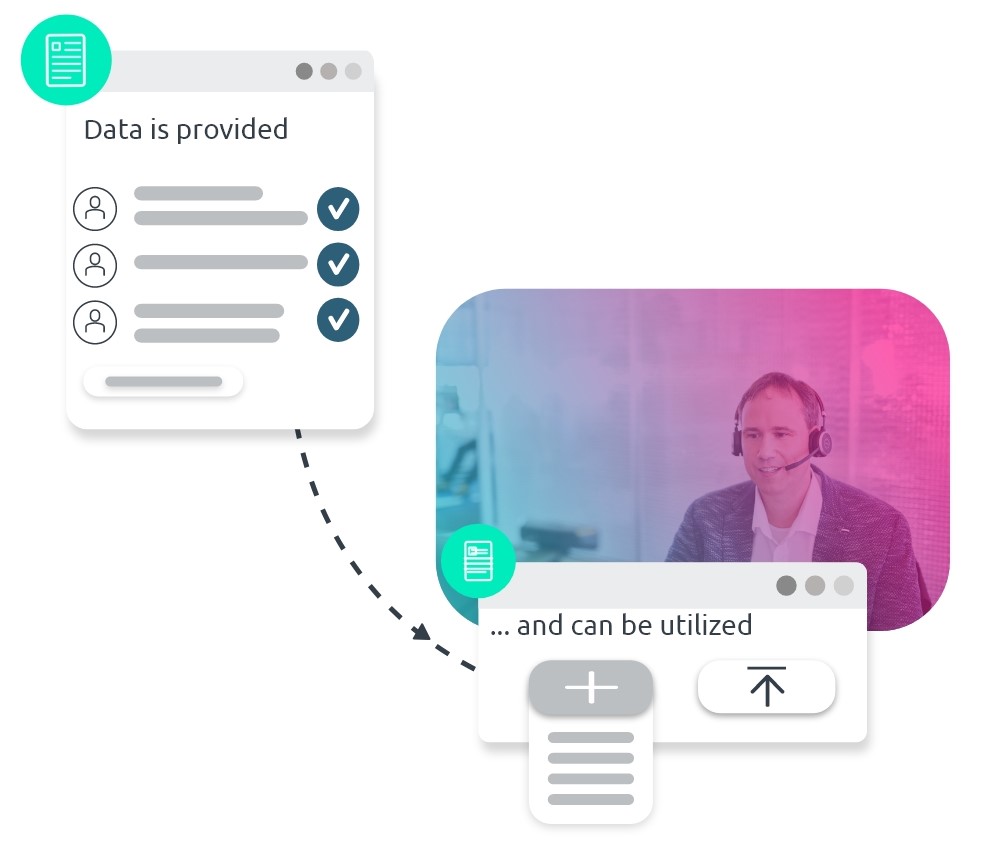
Extract data from documents
- Automatic pattern recognition in text files with extraction of relevant information.
- Innovative Natural Language Processing (NLP) technologies allow options such as automatic reading of invoice data such as the invoice number, date, or amount when processing invoices – even without rule sets or keywords.
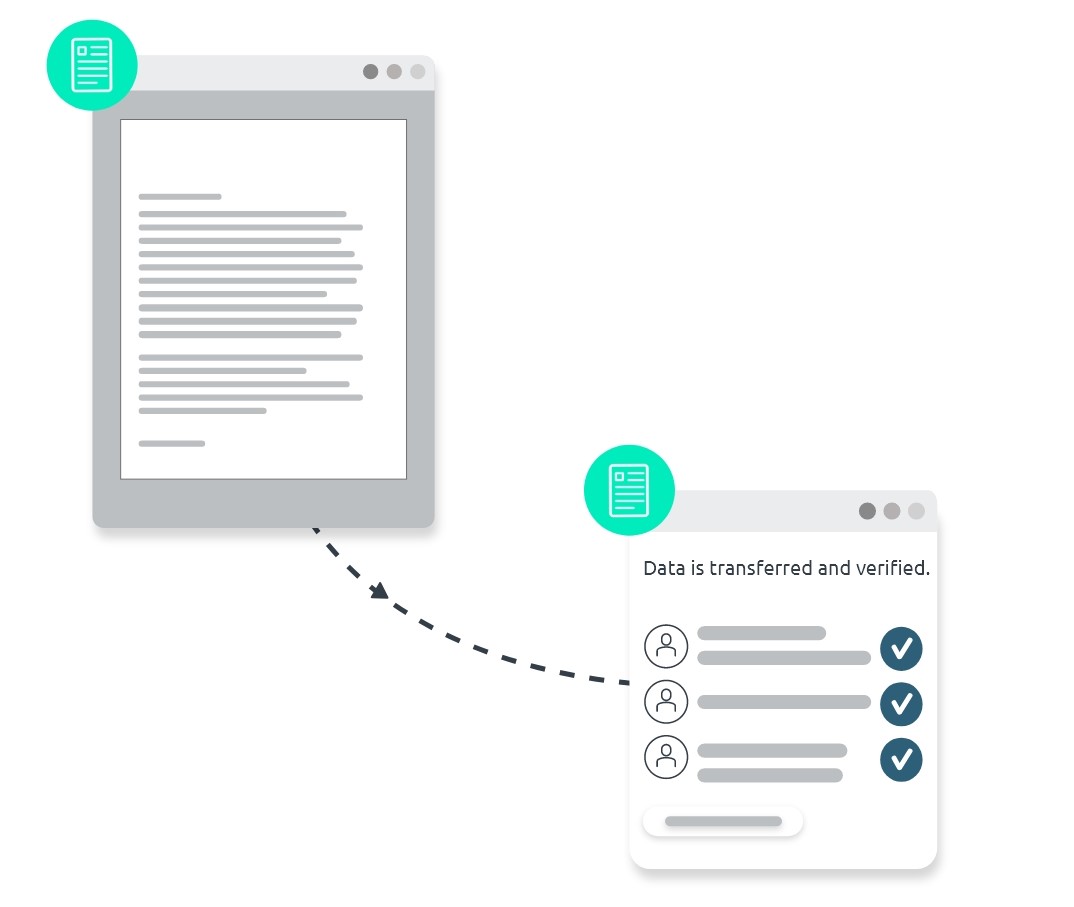

AI IN DIGITAL INVOICE PROCESSING
Artificial intelligence supports FC Schalke 04 in booking and allocating invoices
Assigning incoming documents to a vendor? At Schalke, the accounting staff no longer take care of this alone – now the AI-based DMS is on board. The system automatically proposes account details when processing incoming invoices based on the document information present. This drastically reduces the complexity and manual procedures required – and the process simplified and accelerated accordingly. With 7,500 documents, approximately 500 G/L accounts, a hundred different cost centres, and more than 1,200 vendors, this makes a big difference.
VOICE Interaction
Speech-to-text and text-to-speech
More use cases for combining document management and AI can be found among the new interaction possibilities opened up for d.velop software users via speech interactions.
Never arrive unprepared again – even if you get stuck in traffic
Imagine you are on your way to work for an important meeting, you get in the car, and then you remember that there’s a particular document you forgot to read ahead of time. And thanks to heavy traffic, now you won’t have much time before you arrive. No problem. The text-to-speech function means you can have a summary of the document read out to you while you drive.
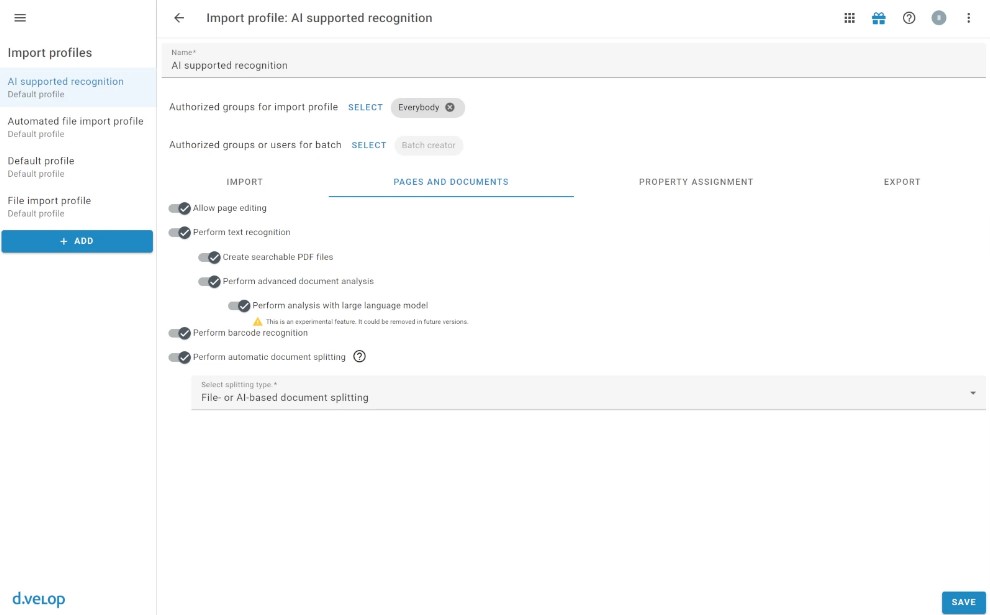
AI NEWS
News and resources about AI
Frequently asked questions about AI
A Large Language Model (LLM) is a large, pre-trained language model based on neural networks with transformer architecture and deep learning algorithms. The pre-training is done on very large amounts of text and fine-tuned for specific tasks.
Large Language Models (LLMs) “understand”, process, and generate natural language and can be used for many tasks, such as responding to questions, or summarising, supplementing, translating, or generating texts. LLMs can even handle complex texts, questions, or instructions, and generate grammatically and orthographically correct, coherent written results. [Admittedly, the text you’re reading right now was written and then translated by skilled human beings.]
Natural Language Processing (NLP) is a subfield within artificial intelligence (AI). The aim of NLP is to enable computers to understand human (or “natural”) language. Conversely, it could also enable people without programming skills to interact with intelligent machines. Important aspects within NLP include text processing, speech recognition, word and semantic similarity, sentiment analysis, language translation and generation, and question-answering systems. NLP-based AI engines can often engage in natural-like dialogue with humans, for example, through advanced chatbots or voice assistants.
Machine learning is a rapidly developing subfield within artificial intelligence. It is used and researched in NLP-related areas such as speech recognition or translation, as well as a wide range of other areas such as autonomous vehicles, medical diagnosis, game development, or manufacturing. The aim of ML is to enable computers to learn through experience and resolve certain challenges or complete certain tasks better and better over time. At the root of ML lies a form of data analysis, pattern recognition, and decision-making, allowing the AI model to perform tasks or make predictions.
The term AI encompasses a few different things.
Firstly, there are two main types of AI, defined by their scope:
1) Narrow (weak) AI: The AI does not have a comprehensive understanding and exists solely to perform one task.
2) General (strong) AI: The AI has comprehensive understanding and a consciousness, just like a human being. At present, this remains a theoretical form.
Now let’s look at three key subsets or applications of AI:
3) Machine Learning: A computer uses algorithms to learn from data and experience, enabling it to improve its performance on a specific task.
4) Natural Language Processing: The computer can understand and work with human language, e.g., in the form of chatbots.
5) Robots and autonomous systems: These use AI-based technology to autonomously perform tasks and make decisions, without constant human supervision. Autonomous robots are used in various fields, for example, car manufacturing, agriculture, or exploration.
In document recognition, the AI uses machine learning techniques to learn from example datasets: For example: Business documents are translated into an abstract form. This is then used to create a mathematical model of the documents. This in turn can be used to make statements about the documents. The learning process involves reviewing many thousands of examples in a dataset for which the desired answer is already known. Each time a new example is presented, the AI model makes a prediction. If this is not correct, the model is adjusted to reduce future errors. The AI model learns from its mistakes.
Software Demo
Get to know d.velop’s AI-based software
Request a personal live demo of d.velop software in just a few clicks. Let us show you the software live and you can ask your questions directly. Just complete the form and we’ll get in touch.

